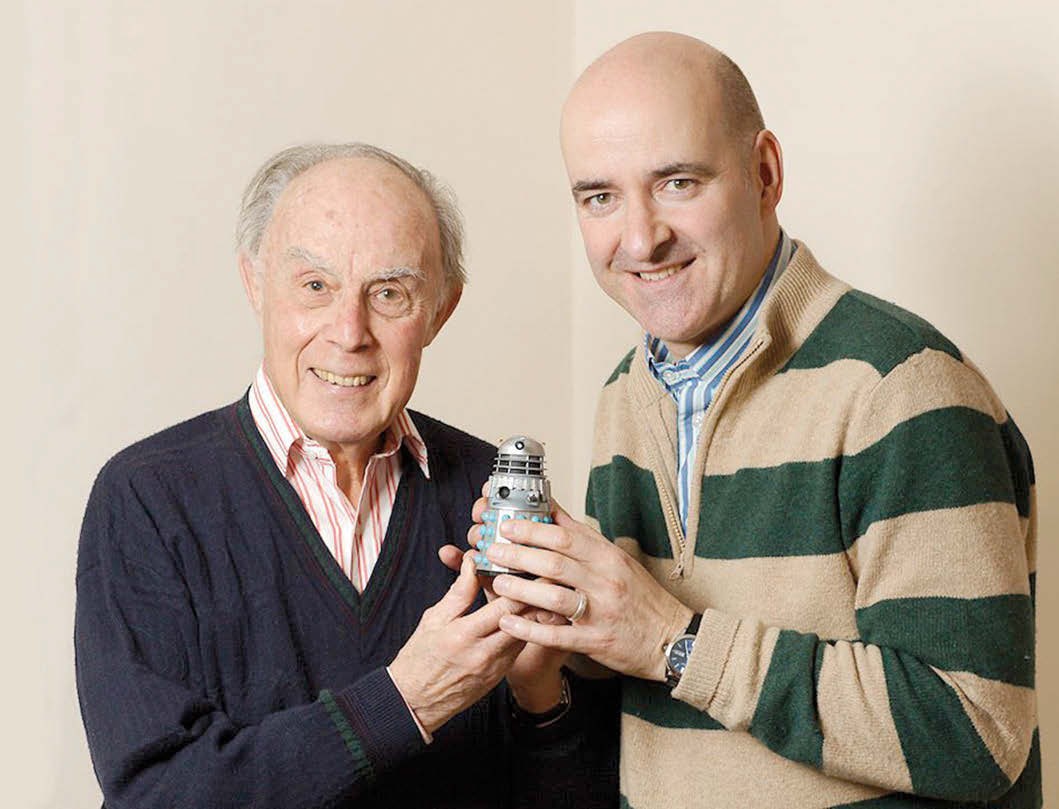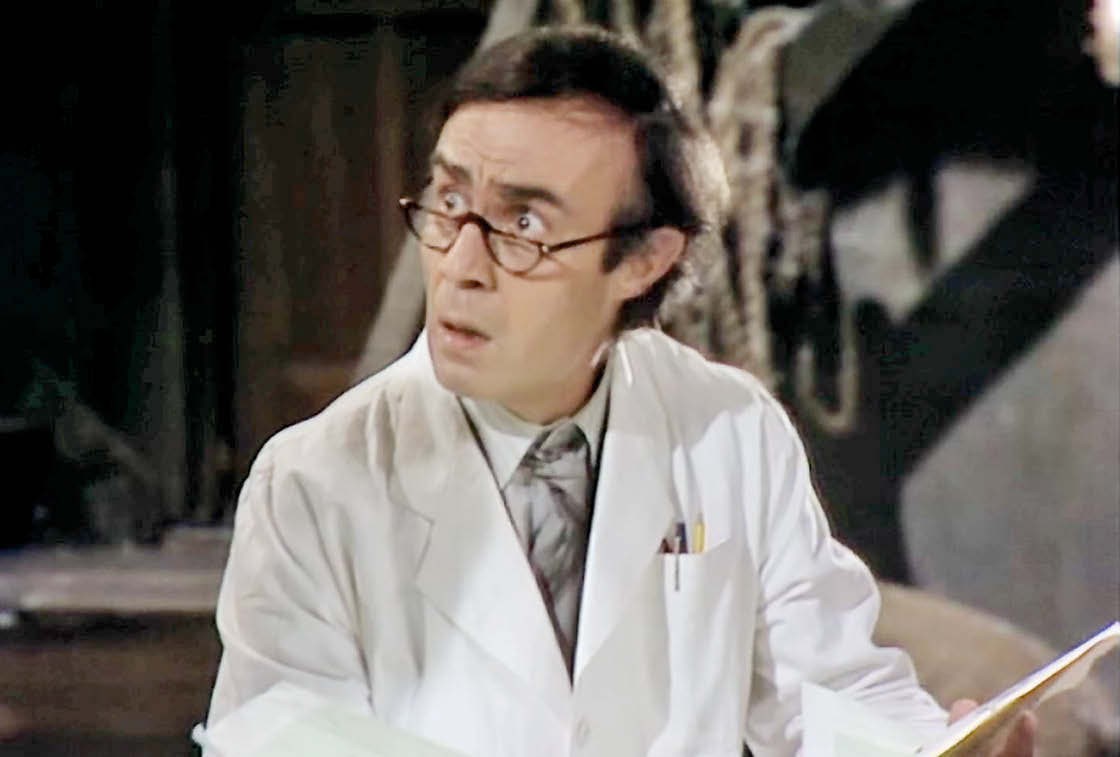Rightly recognised as icons of 1960s popculture design, the Daleks have always looked great. But no matter how visually impressive they are, it’s the voice that makes them evil and scary. You’d expect me to say that, of course, since I’ve been doing the Dalek voices, one way or another, since the space year 2000.
That staccato, unfeeling, grating vocalisation is still the go-to analogy for anything that’s insensitive or just plain horrible about human
interactions. Whether it’s TV dramatist Dennis Potter using the phrase “croak-voiced Daleks” to describe his corporate BBC bosses, or kids in the Royal Albert Hall fleeing for their lives the moment a Dalek screams “Exterminate!” during a Doctor Who Prom (the same Dalek they’d previously been hugging when it was silent), it’s clear that it’s the voice that has the impact and sends out the shockwaves. It’s like your fridge suddenly telling you that it wants to kill you.

Nicholas Briggs with David Graham. Alongside Hawkins, Graham was the original Dalek voice artist.

Graham’s appearances in front of the
Doctor Who
cameras included his portrayal of Professor Kerensky in
City of Death
(1979).
Even before the makers of Doctor Who knew the Daleks would secure the programme’s spectacular longevity, they were taking the voice of the Daleks seriously. Brian Hodgson of the BBC Radiophonic Workshop remembered creating a robot voice with a Post Office ring modulator (a bit of kit that had been reduced to serving as a studio doorstop) and deciding to combine it with the top voice talents of the day, actors Peter Hawkins and David Graham.